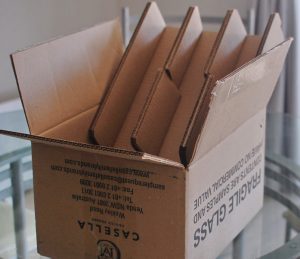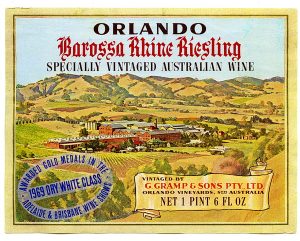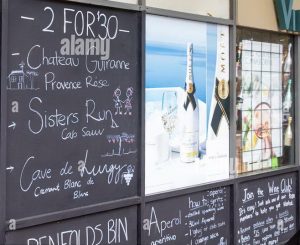You love fine wine, but you don’t love drinking 2-year old reds. So you want to start collecting some of the best wines until they mellow enough to enjoy. What you don’t have is an underground cellar. And you don’t have access to a double brick garage that you don’t need for your car. You don’t even have a house – you live in a second-floor apartment. Global warming isn’t helping either.
The obvious next step is to hire a vault at Kennards or Cellarit or the Wine Ark, where the temperature and humidity are perfect, and the only lights are LEDs.Perfect. Just one problem: 2 little boys have muscled into your lives, and they’re ripping big chunks out of your budget. So is your mortgage, which has grown even faster than the kids. So the perfect storage option may have to wait for a time.
You’ve read what the experts say: a constant temperature is essential, ideally between 14 – 18 degrees. That’s nonsense as you’ll find out. Yes, there are ways to store wine in your apartment, without serious risk of spoilage. Read on.
Wine Cabinets
 These combine high cost of storage with reliance on – and the cost of – electricity to maintain a constant temperature. The 170 bottle Vintec cabinet pictured costs about $4000, so the cost per bottle is about $24 plus electricity. This gives you temperature-controlled storage for 14 dozen bottles of wine. By the time you add 1 or 2 more of these, cost will be an issue, along with space. And if you live in an area that suffers black-outs in summer, this is not a no-risk option.
These combine high cost of storage with reliance on – and the cost of – electricity to maintain a constant temperature. The 170 bottle Vintec cabinet pictured costs about $4000, so the cost per bottle is about $24 plus electricity. This gives you temperature-controlled storage for 14 dozen bottles of wine. By the time you add 1 or 2 more of these, cost will be an issue, along with space. And if you live in an area that suffers black-outs in summer, this is not a no-risk option.
The advice that wine needs to be stored at a constant temperature all year round turns out to be nonsense, as I’ve outlined in this post: Cellaring Wine in a Hot Climate – Over 4 Decades of Hard-Won Wisdom. Far more important is a buffer against sudden changes in temperature such as a cold southerly blasting through the house after a hot spell. The most important thing is making sure that the temperature changes are gradual from day to day and season to season.
That means looking for suitable storage places. The obvious ones to avoid are kitchens and laundries with appliances that put out heat. When I lived in a second floor apartment in Mosman, I used a huge cupboard in the hallway in the centre of the place for wine storage. More wine went under the beds in the second bedroom. I kept the wine in cardboard boxes, and stored almost 50 dozen that way.
Ticking the Right Boxes
In an apartment it makes sense to use the coolest room. You can use cheap foam or other insulation or a heavy blind to cover any windows, and you can store your wine in solid boxes that provide surprisingly effective insulation. With most wines now bottled under screwcaps, humidity is no longer a concern for wine storage but can still affect your labels, so bear that in mind. Screwcaps also mean that you no longer need to store bottles lying on their sides, which gives you more storage options.
In the last few years, wine companies have taken to shipping wine in boxes that hold 6 bottles. As a result, most wineries and wine merchants now ship 6-pack boxes, and the empty ones are stacked up near the checkouts at retailers like Dan M’s and 1st Choice. There are crappy boxes and there are luxury boxes, so you need to be picky with the ones you use. Here are 3 of the best:
 The top prize goes to the Casella box on the left / below. The thick cardboard is clearly designed for serious insulation during shipping. The downside is that this makes the box much bigger than others, so it will take up more storage space.
The top prize goes to the Casella box on the left / below. The thick cardboard is clearly designed for serious insulation during shipping. The downside is that this makes the box much bigger than others, so it will take up more storage space.
 Second prize goes to the Grant Burge box (middle), a luxurious red package designed for their upmarket wines. This is a strong box made of quality cardboard, and it’s a standard size except for the length designed for those extra tall bottles. That means it also fits Riesling bottles as you can see. Very nice.
Second prize goes to the Grant Burge box (middle), a luxurious red package designed for their upmarket wines. This is a strong box made of quality cardboard, and it’s a standard size except for the length designed for those extra tall bottles. That means it also fits Riesling bottles as you can see. Very nice.
The third box is the standard 6-pack box with those soft cardboard inserts for bottles. They’re quite effective too, but vary in quality so you need to be picky. Go for the sturdy, thick ones. The boxes also come in different sizes, of course.
Wine Vaults
For a lock-up that you manage yourself at Kennards, the cost is $127 a month for a 25 case Mini Cellar. And it’s just under $400 a month for a 100 case ‘Jumbo Cellar’. That’s $1500 and $4800 per annum respectively, which is a big chunk out of your wine budget; and the facility is nowhere near as convenient as having the wine you want at hand.
Managed facilities, where the warehouse people look after your wine, catalogue it and accept deliveries from your wine merchant are much dearer again but still don’t address the tyranny of distance. Perhaps the best option is to hire a small vault for your most precious wines, and keep the rest at home.
Final thoughts
For most of us, storing wine involves compromises but I trust that this piece has added some practical footnotes to the rules for cellaring wine, which experts tend to hand down like God did the ten commandments. Clearly, if you live in Brisbane or Perth and further north, you may need more than well-insulated cardboard boxes. In really hot areas, you might want to use a combination of arrangements ranging from air-conditioning to storing some of your wine at a friend’s house or a temperature-controlled lock-up.
Whatever combination you choose, do the numbers carefully. If you’re collecting Grange, the storage cost per bottle is insignificant. If you’re collecting $20 wines, it’s a very different value proposition.
Kim









